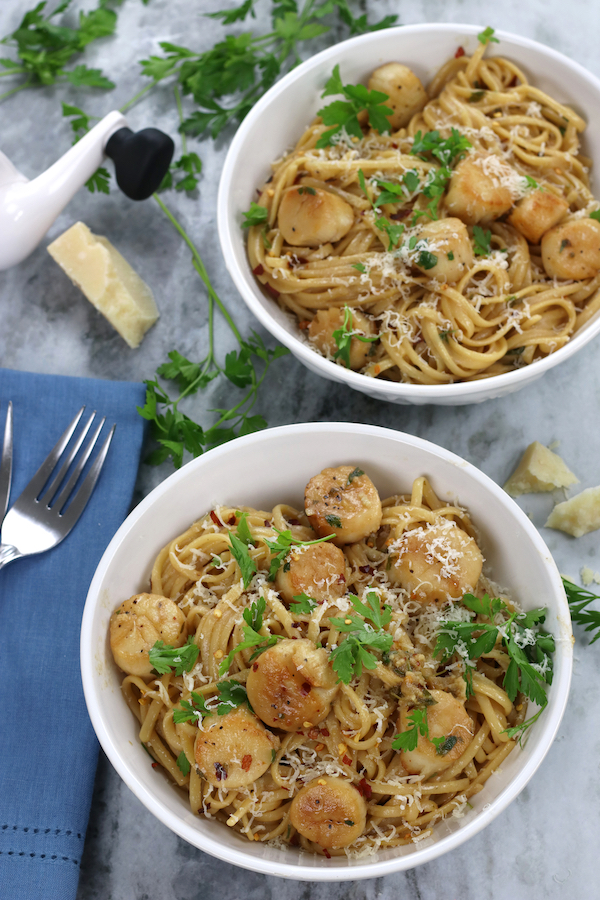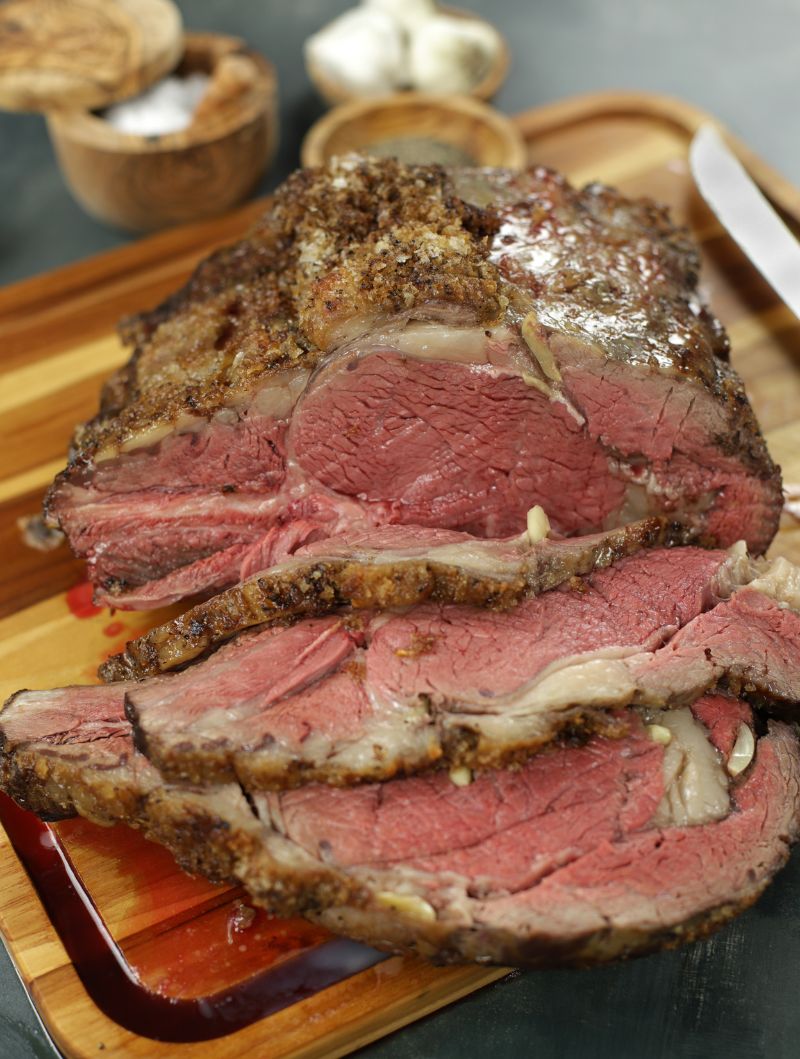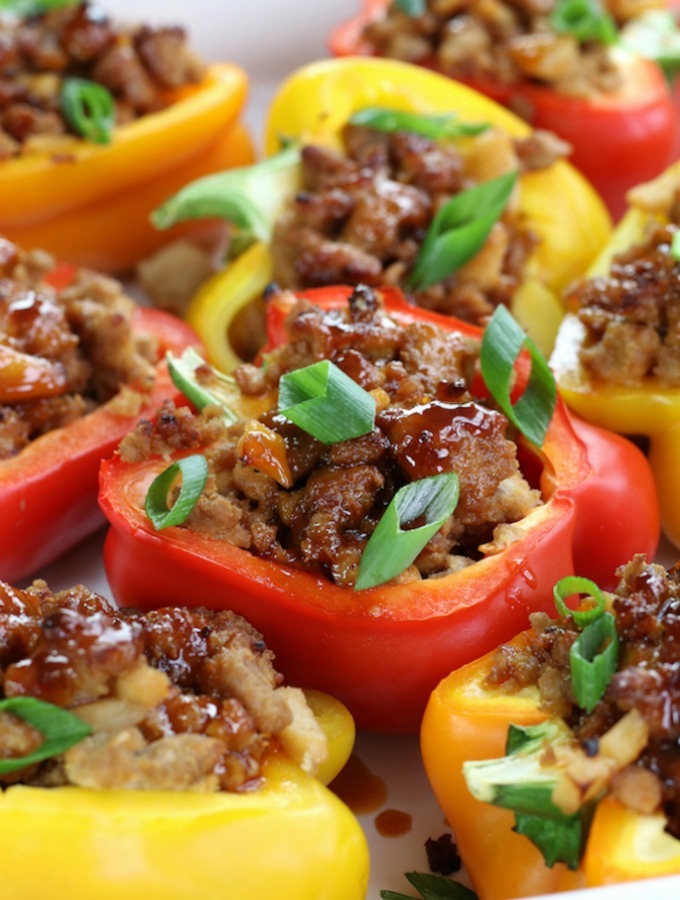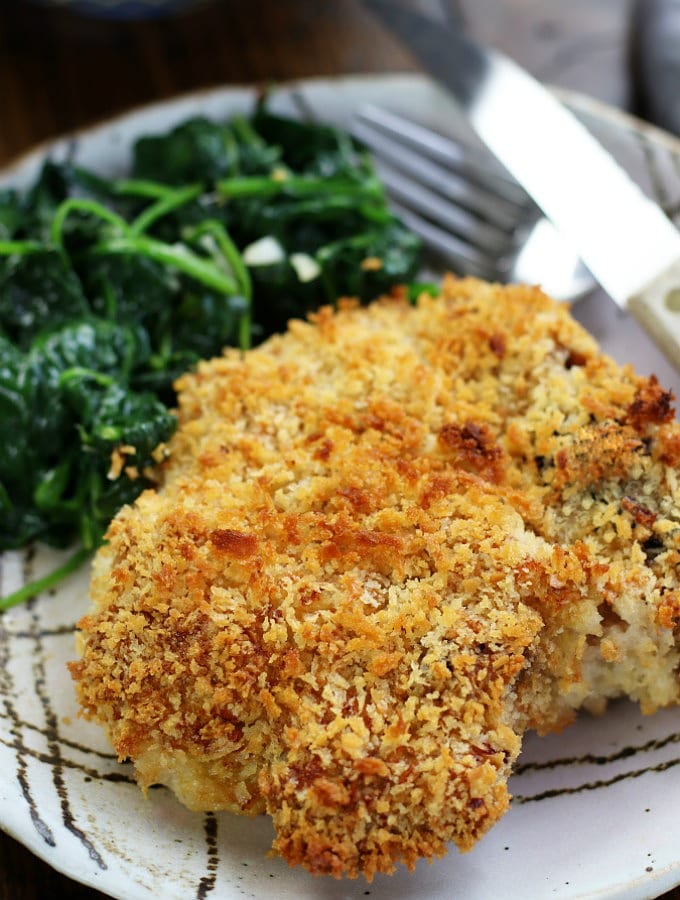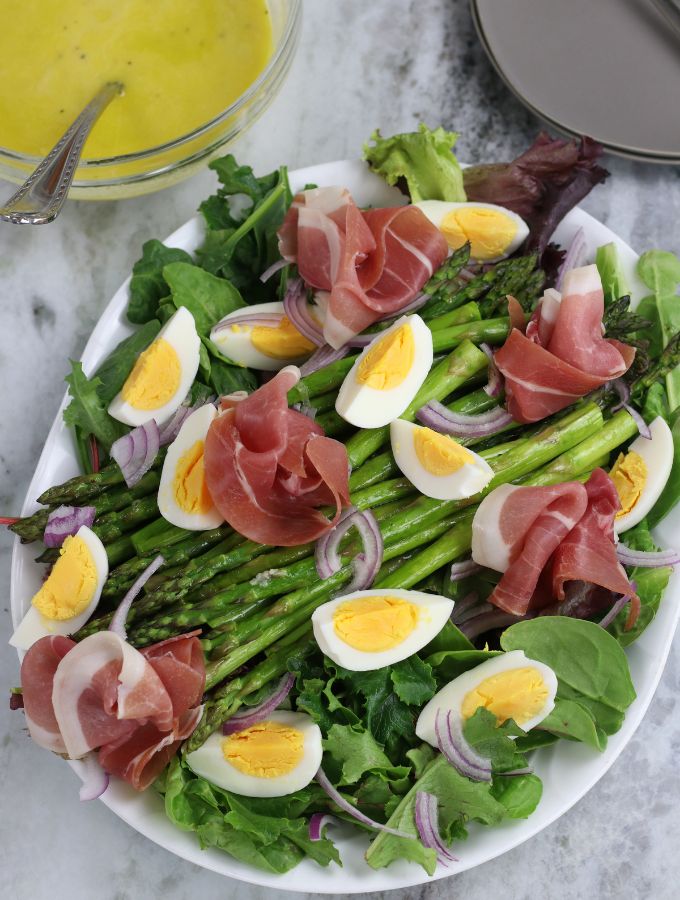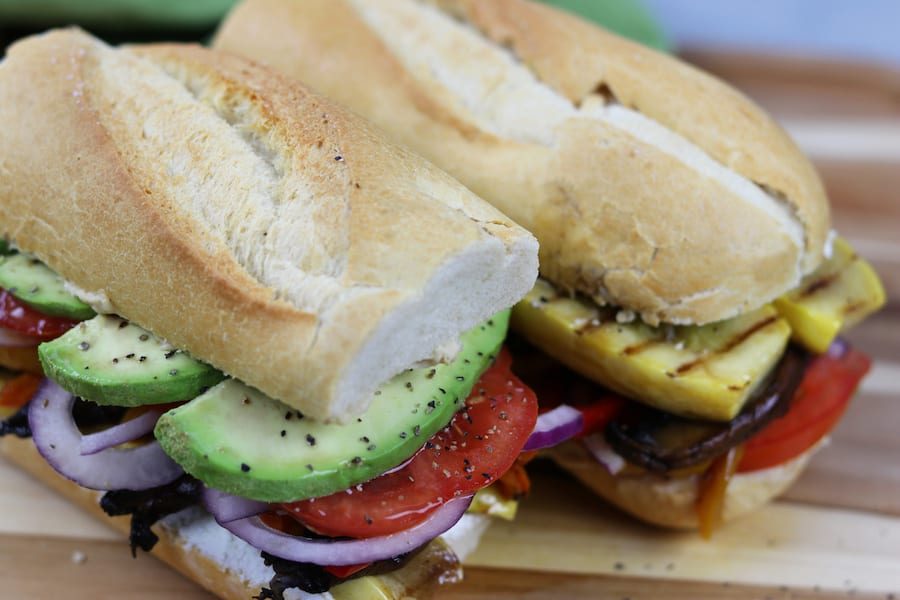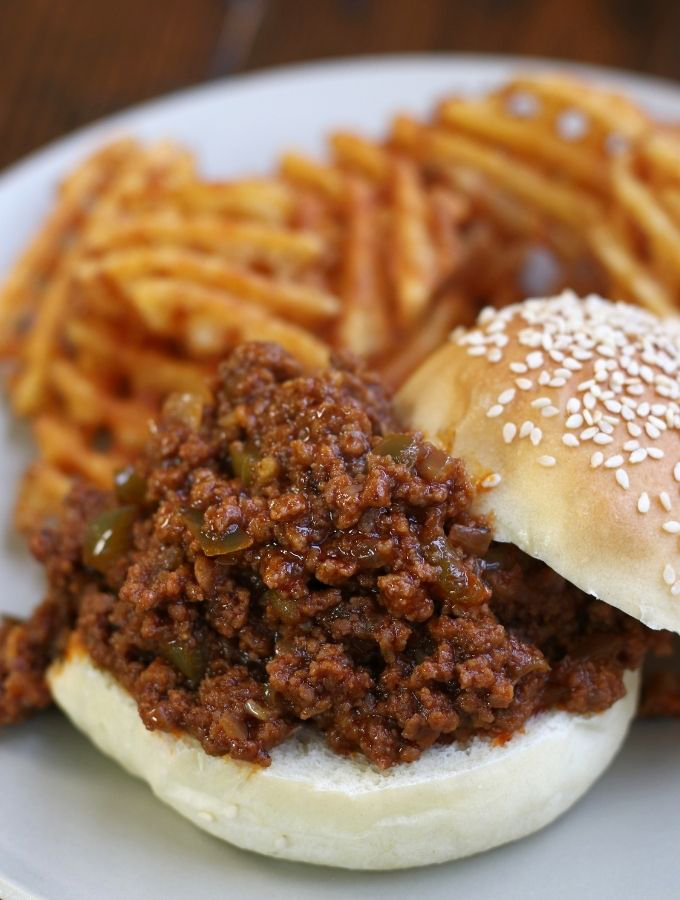Scallop Linguine
Scallop Linguine is an incredibly easy and fast pasta dish that brings together seared scallops and perfectly cooked linguine in a lemon garlic white wine sauce. This dish is elevated with the unique brininess of capers and anchovy fillets making it a delicious seafood pasta experience that is both elegant and comforting.
This post may contain affiliate links which I earn a small portion in sales if a purchase is made. Rest assured though, it is never at any additional cost to you.
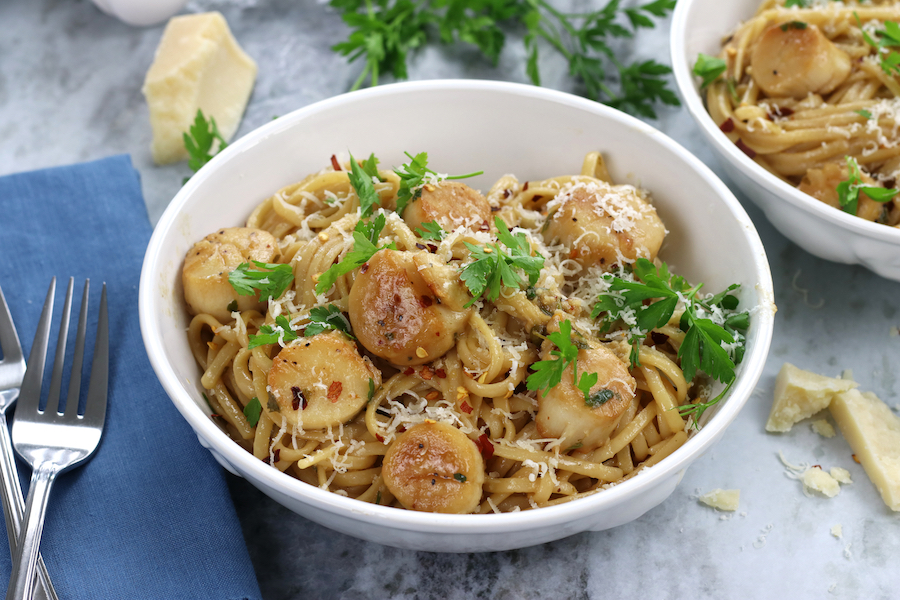
Indulge in Flavor: Scrumptious Scallop Linguine Recipe
This Scallop Linguine recipe is an outstanding choice for both the beginner and seasoned cooks due to its winning combination of its simplicity and incredible flavor. With just a few key ingredients, this dish effortlessly transforms into a culinary masterpiece. Also, its versatility makes it suitable for various occasions throughout the year.
During the summer months, the bright and refreshing flavors of lemon and white wine perfectly complement outdoor gatherings and picnics. In the cooler seasons, the comforting and aromatic elements of garlic, capers, and anchovy fillets make it an ideal choice for cozy dinners at home or for entertaining guests during festive occasions.
Mastering the Art of Searing Sea Scallops: Tips and Techniques for Flawless Results
If you are new to searing scallops, here are some key points for flawless results.
- Start by selecting high-quality frozen sea scallops from a trusted source or seafood market.
- Thaw the scallops in the refrigerator overnight. When defrosting, remove scallops from packaging and place between layers of paper towels on a platter. The paper towels will absorb the excess moisture as the scallops defrost. Note: Follow the package instructions for quick thawing methods if you’re short on time.
- Remove the tough muscle on the side of the scallop. This abductor muscle can be tough and chewy when cooked. To remove simply grasp the muscle gently and pull it away from the scallop using your fingers.
- Prior to searing, make sure to pat the scallops dry using paper towels. This step is crucial to achieve a beautifully caramelized crust.
- Salt and pepper both sides of the scallops.
- Heat a large skillet over medium-high heat and add approximately 3 tablespoons of oil.
- Gently place the scallops in the hot skillet, making sure not to overcrowd the pan. Give each scallop enough space for proper browning.
- Let the scallops cook undisturbed for 2-3 minutes per side, allowing them to develop a golden crust. Avoid flipping them too early to ensure a nice sear.
- Use tongs to flip the scallops and cook for an additional 2-3 minutes on the other side. The interior should be opaque and slightly translucent in the center.
- Remember, practice makes perfect, so don’t be discouraged if your first attempt isn’t flawless. With time and experience, you’ll become a master of searing frozen sea scallops.
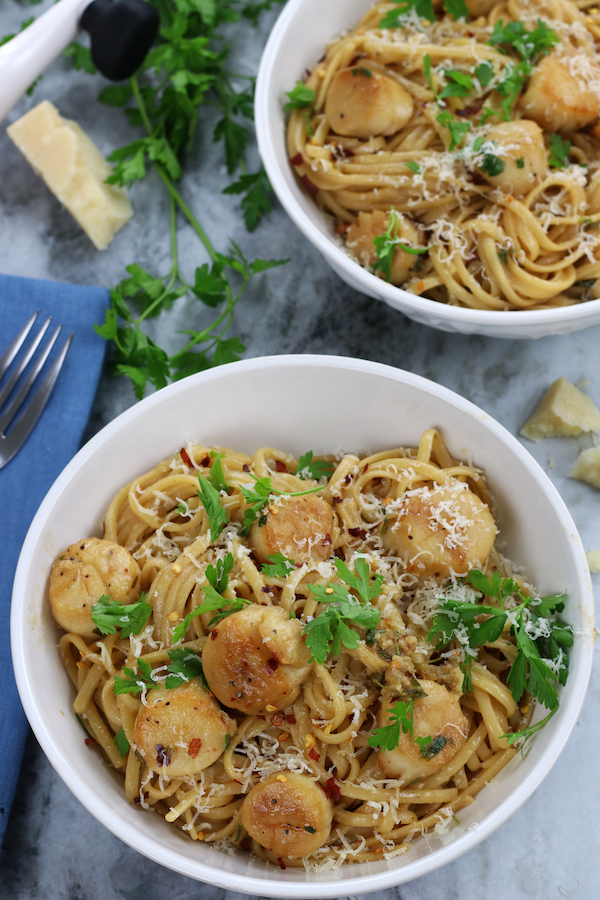
Pasta Perfection: Expert Tips for Irresistible Scallop Linguine
- The flat, ribbon-like shape of linguine provides a large surface area. This characteristic helps the pasta hold onto thiner sauces more effectively, ensuring that every bite is full of flavor.
- Add salt to the boiling water before cooking the pasta. It flavors the pasta from within, so don’t be shy with the amount.
- Cook pasta to the firmer side of al dente. Al dente means a slight firmness when bitten. This ensures a pleasing texture since the pasta will finish cooking in the sauce.
- Reserve 1/4- 1/2 cup of the starchy cooking water and add to the scallop pan at the same time as the pasta. Doing so helps to create a smooth and glossy texture and helps the sauce adhere to the pasta.
Ingredients Needed
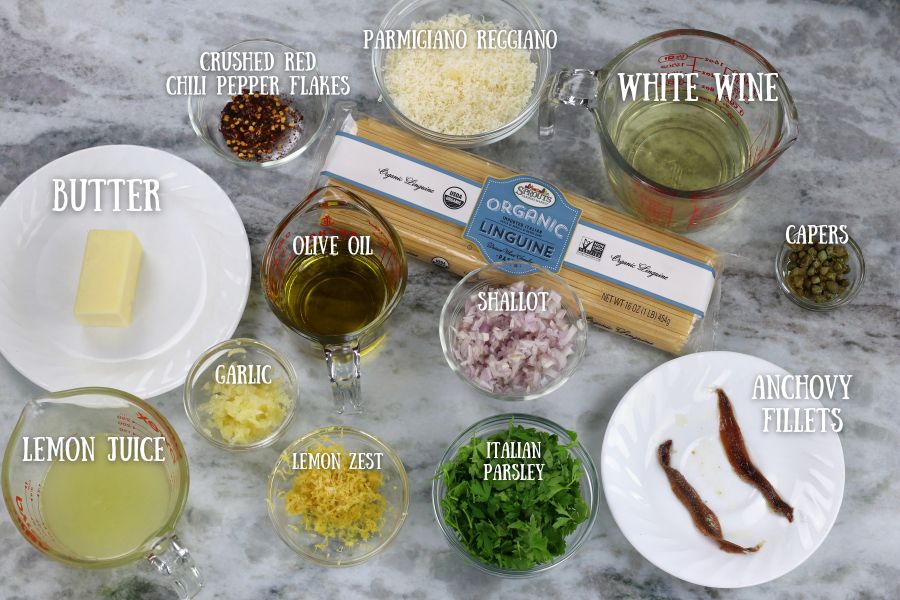
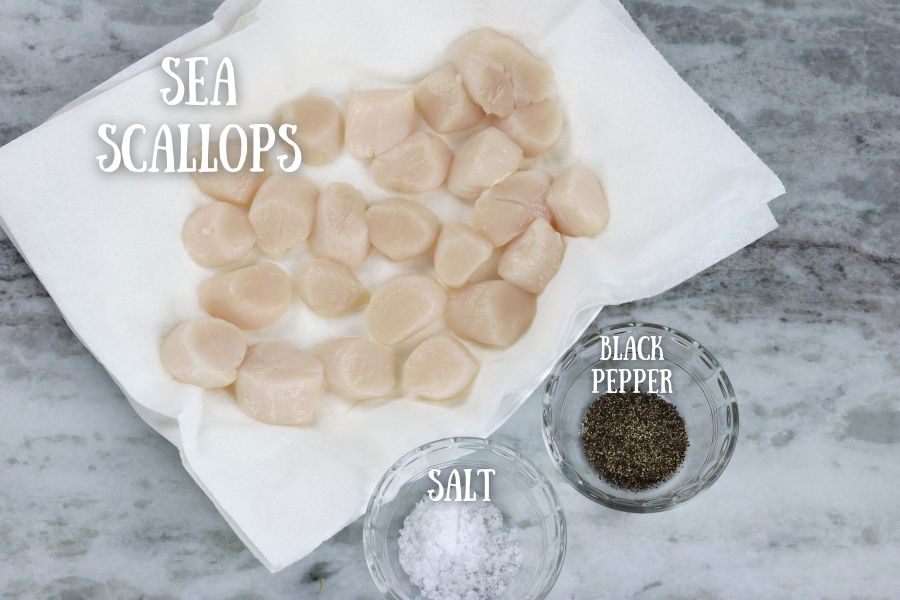
- Linguine Noodles– A wonderful companion to seafood and this pasta shape holds onto thiner pasta sauces extremely well.
- Sea Scallops– This type of scallop is typically larger in size compared to their smaller counterparts, bay scallops. When cooked properly, sea scallops develop a golden caramelized crust on the outside while remaining moist and succulent on the inside.
- Olive Oil and Butter– Using a combination creates a flavorful base for the sauce. Additionally, the olive oil has a bit higher smoke point compared to the butter. This will allow for the higher cooking temperatures needed to create the desirable golden crust on the scallops.
- Shallot– Adding a diced shallot contributes a subtle yet delightful onion flavor that enhances the overall taste and enjoyment of the meal.
- Fresh Garlic and Crushed Red Chili Pepper Flakes– Fresh garlic adds aromatic depth to the dish, while red chili pepper flakes provide a subtle heat.
- Capers and Anchovy Fillets– Capers contribute a briny, tangy element while anchovy fillets provide a savory, umami depth to the sauce.
- Lemon Zest and Lemon Juice– The zest adds an irresistible brightness while the juice brings a tangy freshness to the dish.
- White Wine– Using a white wine such as sauvignon blanc adds acidity and complexity to the sauce.
- Italian Parsley– Provides a vibrant, herbaceous flavor.
- Parmigiano Reggiano– High-quality Italian cheese that adds a nutty and salty flavor. Costco has the best affordable Parmigiano Reggiano. Additionally, this amazing hand held grater is perfect for simplifying the task of grating authentic parmesan.
How To Make
Mise en Place
Mise en place is a fundamental concept in cooking that every home cook should master. For your Scallop Linguine recipe, it involves gathering and preparing all the necessary ingredients before you start cooking. Additionally, having all the tools needed for the recipe within reach will streamline the cooking process.
Steps in making Scallop Linguine
- Let scallops sit at room temperature for 20-30 minutes before searing. Remove the tough muscle on the side of the scallops.
- Thoroughly pat dry the scallops and season with salt and pepper.
- Boil a large pot of salted water and cook pasta according to package instructions minus 1 minute.
- While the pasta cooks, preheat a skillet over medium-high heat. Add olive oil and sear the scallops for about 2 minutes per side until golden brown. Remove scallops and set aside.
- In the same skillet, add more olive oil and butter. Sauté shallots, anchovy fillets, capers, and chili pepper flakes for 1-2 minutes.
- Add zest, garlic, lemon juice, wine, and parsley to the skillet. Simmer for about 2 minutes.
- Transfer the cooked pasta to the skillet along with 1/4 cup of pasta water. Cook for 1-2 minutes, stirring frequently.
- Toss in Parmigiano Reggiano and remaining parsley. Add the scallops back to the skillet and serve immediately.
Variations
By embracing the variation ideas below, you can customize Scallop Linguine to suit your taste preferences and create exciting new flavors. Don’t be afraid to get creative and have fun experimenting with different ingredients to make the dish uniquely your own.
- Sauce Variation– Eliminate the capers and anchovy fillets for a bright and summery flair that emphasis the lemon, garlic and white wine.
- Vegetable Additions– Enhance the dish with a variety of vegetables such as sautéed spinach, cherry tomatoes, roasted bell peppers, or asparagus. Anyone of these can add freshness, color, and nutritional value to the pasta.
- Herb and Spice Combinations– Explore different herb and spice combinations to infuse unique flavors into the dish. Try adding fresh basil, thyme, or oregano, or incorporate spices like paprika, cayenne pepper, or Italian seasoning.
- Protein Substitutions– If scallops are not available or preferred, consider using other proteins like shrimp, lobster, or even chicken to create a different twist on the dish.
- Cheese Choices– While Parmigiano Reggiano is a classic choice, feel free to explore other cheese options. Try pecorino romano, grana padano, or a combination of different cheeses to add complexity to the dish.
- Pasta Alternatives– If linguine is not readily available, try using other pasta shapes like spaghetti, fettuccine, or penne. Each shape can bring a different texture and mouthfeel to the dish.
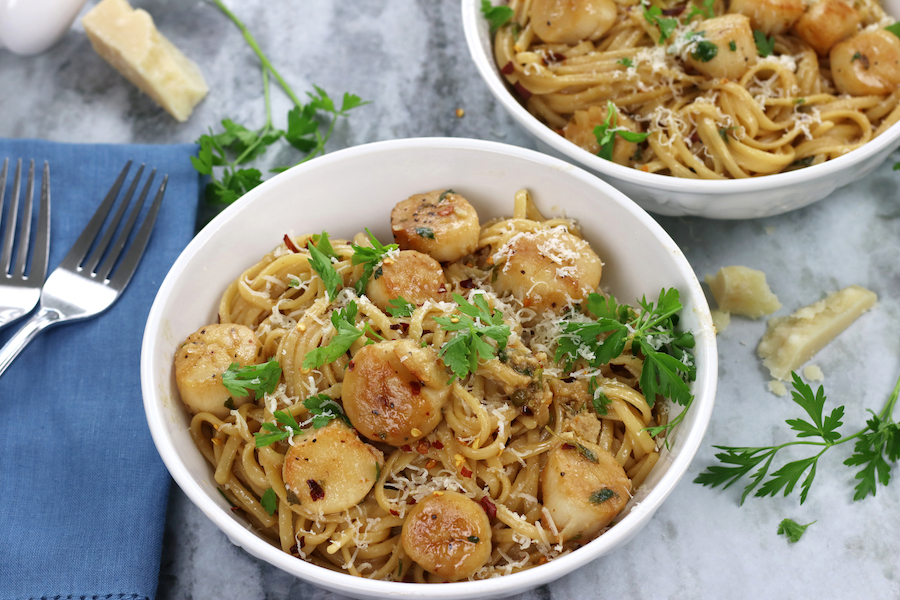
Mediterranean Version of Scallop Linguine
Adapting Scallop Linguine to fit the Mediterranean diet involves a few changes:
- Use olive oil instead of a mix of butter and oil for healthier fats.
- Choose whole grain or whole wheat linguine for more fiber and better carbs.
- Enjoy cheese in moderation to align with the diet’s recommendations.
- Add more vegetables to the dish for a plant-based focus, like spinach or roasted cherry tomatoes.
- Include legumes such as white beans, chickpeas, or lentils in the dish. They provide a good source of plant-based protein and fiber, making the meal more filling and nutritious.
Frequently Asked Questions
Can bay scallops be used for this recipe?
When using bay scallops instead of sea scallops in your recipe, the steps will change slightly.
- Cooking Time– Bay scallops are smaller and more delicate than sea scallops, so they cook much faster. You will need to reduce the cooking time to avoid overcooking and making them tough.
- Adjusting Heat– Because bay scallops are smaller, they can easily become overcooked or rubbery if exposed to high heat for too long. Lower the heat slightly to ensure gentle cooking and prevent them from drying out.
- Handling– Bay scallops are more delicate, so be careful when handling them. Use a spatula to flip them gently, ensuring they don’t break apart.
- Adjusting Proportions– Since bay scallops are smaller, you may want to increase the quantity you use to ensure each bite has a good amount of scallops in the dish.
How do I prevent the scallops from becoming rubbery?
My best suggestion is to follow the tips laid out in the section above titled “Mastering the Art of Searing Sea Scallops”. However, here is a very brief summary to ensure your sea scallops will turn out tender and delicious, without any rubbery texture.
- Pat dry before cooking to remove excess moisture.
- Allow scallops to come to room temperature before cooking.
- Use high heat for quick cooking.
- Avoid overcrowding the pan.
- Flip scallops only once.
- Use a timer to prevent overcooking.
Is there a good substitute for the white wine?
Vegetable, chicken or seafood stock all would be an excellent substitute for the white wine in this pasta dish.
How do I incorporate vegetables and herbs into the pasta dish?
Adding sautéed or roasted veggies to the final part of cooking, just long enough to warm them, is a handy way to incorporate veggies to this dish. Also, cherry tomatoes and spinach can be added in the last few minutes of cooking.
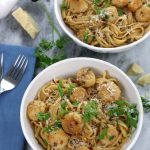
Scallop Linguine
Ingredients
- 1 pound linguine noodles *see Note #1 below
- 1 pound sea scallops
- salt and pepper
- 1/2 cup olive oil *divided
- 1/4 cup butter
- 1 large shallot *finely diced
- 2 anchovy fillets *or 1 teaspoon anchovy paste
- 5 large garlic cloves *crushed or minced, about 1 heaping tablespoon
- 1/2 teaspoon red chili pepper flakes
- 1 tablespoon capers
- 2 large lemons zested
- 1/2 cup lemon juice
- 1 cup sauvignon blanc
- 1 cup finely chopped Italian parsley *divided
- 1 cup finely grated Parmigiano Reggiano
Instructions
- Let scallops sit at room temperature for 20-30 minutes before searing. Remove the tough muscle on the side of the scallop. See Note #2 below.
- Thoroughly pat dry the scallops and salt and pepper each side.
- Bring a large pot of water to boil. Once boiling generously salt the water. Cook pasta according to package instructions minus 1 minute. Note: The pasta will finish its cooking in the sauce.Wait to start searing the scallops until the pasta is cooking.
- Preheat a large skillet over medium high heat. Add approximately 3 tablespoons of olive oil. Once the oil starts to ripple and shimmer with a slightly wavy appearance add scallops. Sear for approximately 2 minutes per side or until a deeper golden brown sear develops. Remove scallops from pan onto a plate. Tent loosely with foil to keep warm.
- Over the same heat add the remaining olive oil and butter.
- Once butter is melted reduce heat to medium low and add shallots, anchovy fillets, capers and chili pepper flakes. Sauté for 1-2 minutes.
- To the pan add the zest and garlic. Sauté for 30 seconds and then carefully pour in the juice, wine and 1/2 cup parsley. Bring to a simmer for about 2 minutes. See Note #3 below.
- Transfer the slightly undercooked pasta to skillet pan along with 1/4 cup of pasta water. Continue cooking the pasta for about 1-2 minutes stirring frequently.
- Turn off heat and toss in Parmigiano Reggiano and remaining parsley. Add scallops back to the pan and serve immediatly.
Video
Notes
- Lower Fat– Lower the olive oil to 3 tablespoons and add only 1-2 tablespoons of butter. Replace with a 1/2 cup of chicken broth or seafood stock added at the same time as the lemon juice.
- Mediterranean Diet Version– Replace butter with all olive oil, use whole wheat linguine and add veggies or white beans.
- Sauce Variation– Eliminate the capers and anchovy fillets for a bright and summery flair that emphasis the lemon, garlic and white wine.
- Herb and Spice Combinations– Try adding fresh basil, thyme, or oregano, or incorporate spices like paprika, cayenne pepper, or Italian seasoning.
- Protein Variations– If scallops are not available or preferred, consider using other proteins like shrimp, lobster, or even chicken to create a different twist on the dish.

